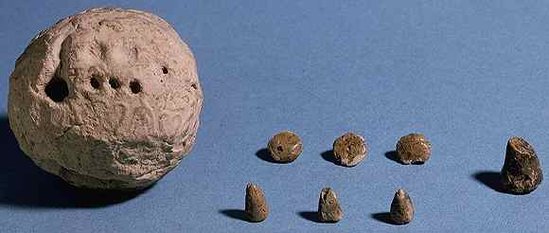











Mesopotamia (from the Greek meaning "The land between the two rivers")[1] is an area geographically located between the Tigris and Euphrates rivers, largely corresponding to modern Iraq[2], northeastern Syria,[2] southeastern Turkey,[2] and the Khūzestān Province of southwestern Iran[3][4].
Commonly known as the "Cradle of civilization", Bronze Age Mesopotamia included Sumer and the Akkadian, Babylonian, Assyrian Empires. In the Iron Age, it was conquered into the Neo-Assyrian Empire, which gave way to the Achaemenid Empire. It mostly remained under Persian rule until the 7th century Islamic conquest of the Sassanid Empire.
History
Mesopotamian history extends from the emergence of Urban societies in Southern Iraq in the 5th millennium BC to the arrival of Alexander the Great in the 4th century BC (which is seen as the hallmark of the Hellenization of the Near East, therefore supposedly marking the "end" of Mesopotamia). A cultural continuity and spatial homogeneity for this entire historical geography ("the Great Tradition") is popularly assumed, though the assumption is problematic. Mesopotamia housed some of the world's most ancient states with highly developed social complexity. The region was famous as one of the four riverine civilizations where writing was first invented, along with the Nile valley in Egypt, the Indus Valley in the Indian subcontinent and Yellow River valley in China (Although writing is also known to have arisen independently in Mesoamerica and the Andes).
Mesopotamia housed historically important cities such as Uruk, Nippur, Nineveh, and Babylon as well as major territorial states such as the Akkadian kingdom, Third Dynasty of Ur, and Assyrian empire. Some of the important historical Mesopotamian leaders were Ur-Nammu (king of Ur), Sargon (who established the Akkadian Kingdom), Hammurabi (who established the Old Babylonian state), and Tiglath-Pileser I (who established the Assyrian Empire).
"Ancient Mesopotamia" includes the period from the late 6th millennium BC until the rise of the Achaemenid Persians in the 6th century BC. This long period may be divided as follows:
Dates are approximate for the second and third millennia BC; compare Chronology of the Ancient Near East.


 The source of his power: loyal soldiers
The source of his power: loyal soldiers










The show Naked Office plans to have cameras following fully clothed employees at work and gauging their views on nudity.
Some will be asked to pose for life-drawing classes to see how comfortable they feel in the buff in public.
And, every now and then, the firm’s staff will all be asked to come to work in the buff for an event called Naked Friday.
The basic idea behind the whole plot is to look at people’s attitudes to nudity, body image and the role clothes play in office hierarchy.
In a letter inviting companies to take part in Naked Office, producers assure potential participants the project would be a “very productive day as well as a day to remember.”